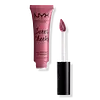What's inside
What's inside
 Key Ingredients
Key Ingredients

 Benefits
Benefits

 Concerns
Concerns

 Ingredients Side-by-side
Ingredients Side-by-side

Dimethicone
EmollientBis-Diglyceryl Polyacyladipate-2
EmollientPhenyl Trimethicone
Skin ConditioningNylon-12
Kaolin
AbrasiveDiisostearyl Malate
EmollientHydrogenated Polyisobutene
EmollientDimethicone Crosspolymer
Emulsion StabilisingVinyl Dimethicone/Methicone Silsesquioxane Crosspolymer
Butyrospermum Parkii Butter
Skin ConditioningGlycerin
HumectantCI 77120
Cosmetic ColorantAlumina
AbrasiveAluminum Hydroxide
EmollientCaprylyl Glycol
EmollientTocopherol
AntioxidantTocopheryl Acetate
AntioxidantSorbic Acid
PreservativePhenoxyethanol
PreservativeCI 15850
Cosmetic ColorantCI 77491
Cosmetic ColorantCI 77492
Cosmetic ColorantCI 77499
Cosmetic ColorantCI 77891
Cosmetic ColorantCI 19140
Cosmetic ColorantCI 42090
Cosmetic ColorantDimethicone, Bis-Diglyceryl Polyacyladipate-2, Phenyl Trimethicone, Nylon-12, Kaolin, Diisostearyl Malate, Hydrogenated Polyisobutene, Dimethicone Crosspolymer, Vinyl Dimethicone/Methicone Silsesquioxane Crosspolymer, Butyrospermum Parkii Butter, Glycerin, CI 77120, Alumina, Aluminum Hydroxide, Caprylyl Glycol, Tocopherol, Tocopheryl Acetate, Sorbic Acid, Phenoxyethanol, CI 15850, CI 77491, CI 77492, CI 77499, CI 77891, CI 19140, CI 42090
Ricinus Communis Seed Oil
MaskingPersea Gratissima Oil
Skin ConditioningEthylhexyl Palmitate
EmollientHelianthus Annuus Seed Wax
Skin ConditioningCandelilla Cera
EmollientC12-15 Alkyl Benzoate
AntimicrobialIsononyl Isononanoate
EmollientSilica
AbrasiveParfum
MaskingCitrus Aurantium Dulcis Peel Wax
Skin ConditioningMangifera Indica Seed Butter
Skin ConditioningPrunus Armeniaca Kernel Oil
MaskingTocopheryl Acetate
AntioxidantHydrogenated Vegetable Oil
EmollientMica
Cosmetic ColorantStearalkonium Hectorite
Gel FormingIsopropyl Myristate
EmollientPolyhydroxystearic Acid
EmulsifyingBis-Stearyl Dimethicone
EmollientIsopropyl Titanium Triisostearate
EmollientSynthetic Fluorphlogopite
Tin Oxide
AbrasivePalmitic Acid
EmollientLimonene
PerfumingLinalool
PerfumingCI 77891
Cosmetic ColorantCI 77492
Cosmetic ColorantCI 15850
Cosmetic ColorantCI 73360
Cosmetic ColorantCI 19140
Cosmetic ColorantRicinus Communis Seed Oil, Persea Gratissima Oil, Ethylhexyl Palmitate, Helianthus Annuus Seed Wax, Candelilla Cera, C12-15 Alkyl Benzoate, Isononyl Isononanoate, Silica, Parfum, Citrus Aurantium Dulcis Peel Wax, Mangifera Indica Seed Butter, Prunus Armeniaca Kernel Oil, Tocopheryl Acetate, Hydrogenated Vegetable Oil, Mica, Stearalkonium Hectorite, Isopropyl Myristate, Polyhydroxystearic Acid, Bis-Stearyl Dimethicone, Isopropyl Titanium Triisostearate, Synthetic Fluorphlogopite, Tin Oxide, Palmitic Acid, Limonene, Linalool, CI 77891, CI 77492, CI 15850, CI 73360, CI 19140
Ingredients Explained
These ingredients are found in both products.
Ingredients higher up in an ingredient list are typically present in a larger amount.
Ci 15850 is the pigment color red. It is an azo dye and created synthetically.
Azo dyes need to be thoroughly purified before use. This allows them to be more stable and longer-lasting.
This ingredient is common in foundations, lipsticks, and blushes. This color is described as brown/orangey red.
It has many secondary names such as Red 6 and Red 7. According to a manufacturer, Red 6 usually contains aluminum.
Learn more about CI 15850CI 19140 is also known as Tartrazine. Tartrazine is a synthetic dye used in cosmetics, foods, and medicine to add a yellow color.
Tartrazine is created from petroleum and is water-soluble.
Some people may experience allergies from this dye, especially asthmatics and those with an aspirin intolerance.
Learn more about CI 19140Ci 77492 is also hydrated iron III oxide. It's sole purpose is to give a yellow hue to products.
Iron III oxides are classified as inorganic chemicals for coloring.
Synthetically created Ci 77492 is considered safer than those naturally found. This is because the synthetically created version may contain less impurities. Iron oxides are generally non-toxic and non-allergenic.
Learn more about CI 77492Ci 77891 is a white pigment from Titanium dioxide. It is naturally found in minerals such as rutile and ilmenite.
It's main function is to add a white color to cosmetics. It can also be mixed with other colors to create different shades.
Ci 77891 is commonly found in sunscreens due to its ability to block UV rays.
Learn more about CI 77891Tocopheryl Acetate is AKA Vitamin E. It is an antioxidant and protects your skin from free radicals. Free radicals damage the skin by breaking down collagen.
One study found using Tocopheryl Acetate with Vitamin C decreased the number of sunburned cells.
Tocopheryl Acetate is commonly found in both skincare and dietary supplements.
Learn more about Tocopheryl Acetate